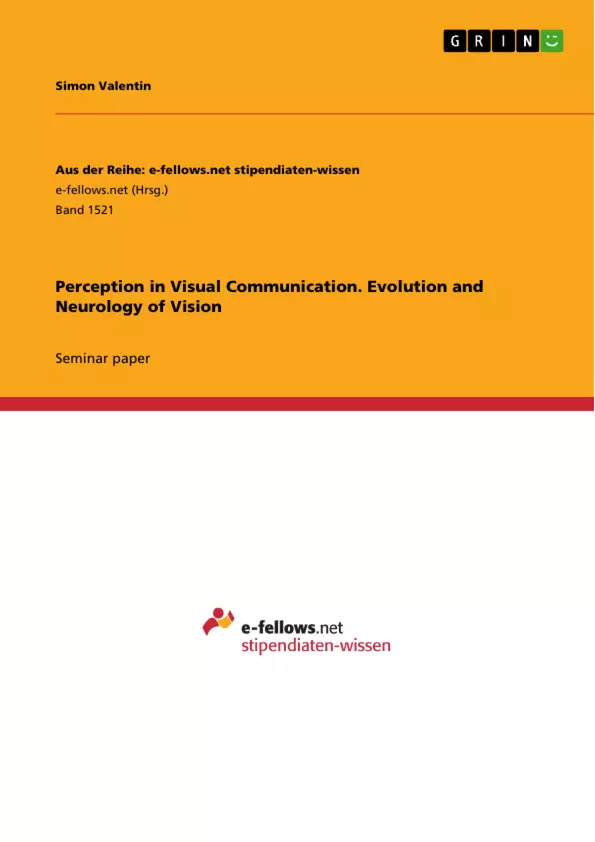Today, in our fast moving, computer-driven lives we are exposed to a myriad of sensations every second and not only from the environment or nature around us but also from ceaseless attacks through our modern media, that is mostly based on visual stimulation. So the topic of perception is, although it has been dealt with throughout the centuries from the stoic philosophy of the Greeks to modern neurologists, a highly current one that affects us all and every day in an unprecedented way.
Not least as a popular American crime drama television series with the title “Perception”, where an eccentric neuropsychiatrist uses his unique perception abilities to solve complex criminal cases and a modern theatre play “Molly Sweeney” by Brian Friel, on stage at the moment at Theater Lindenhof in Melchingen, Germany, where the protagonist, a young woman, regained her eyesight through an operation and could not cope with the overwhelming sensations, show the current fascination of the topic.
In the following chapters I will draw attention to the basic principles of perception, especially visual perception as well as the evolution, concept and the functioning of our eyes to come to a better understanding of how we see things and the way our visual perception works.
Table of Contents
- Introduction
- Basics of perception
- What is perception?
- Facts about vision
- The evolution of vision
- The concept of vision
- Structure and function of the human eye
- Neurology of vision
- Conclusion
Objectives and Key Themes
This written assignment aims to provide a comprehensive understanding of visual perception, exploring its fundamental principles, evolutionary development, neurological basis, and practical implications in our modern lives.
- The nature and process of perception, particularly visual perception.
- The evolutionary history and development of human vision.
- The structure and function of the human eye.
- The neurological mechanisms underlying vision.
- The influence of perception on our experiences and actions.
Chapter Summaries
- Introduction: This chapter introduces the topic of perception, highlighting its relevance in today's visually saturated environment. It also explores the current fascination with perception as seen in popular culture through examples like the TV series "Perception" and the play "Molly Sweeney."
- Basics of perception and vision: This chapter defines perception as a multifaceted process involving stimulus identification, interpretation, and organization of information. It discusses the role of the five classical senses and the multitude of other senses in shaping our perception of the world.
- What is perception?: This section delves into the Cambridge Dictionary's definition of perception, highlighting its connection to sensory experiences and subjective understanding of reality. It emphasizes the active role of the brain in shaping perception.
- Facts about vision: This section focuses on specific aspects of vision, discussing its importance in the context of our overall sensory experiences. It highlights the role of vision in providing critical information for survival and navigating our environment.
- The evolution of vision: This chapter examines the evolutionary development of vision, tracing its origins and the gradual emergence of sophisticated visual systems. It explores the adaptive advantages and evolutionary pressures that shaped the development of human vision.
- The concept of vision: This chapter explores the human eye, its structure, and its functions. It explains how light interacts with the eye and how this information is processed and interpreted by the brain.
- Structure and function of the human eye: This section dives deeper into the anatomy and physiology of the human eye, detailing its various components and their roles in visual perception. It discusses the intricate interplay between light, the eye, and the brain.
- Neurology of vision: This section delves into the neural pathways and processes involved in vision. It explores how visual information is transmitted from the eye to the brain and how it is interpreted to create our experience of the world.
Keywords
The key terms and focus topics of this work include: visual perception, sensory experience, evolution of vision, human eye structure, neurology of vision, stimulus interpretation, subjective understanding, and environmental awareness.
- Citar trabajo
- Simon Valentin (Autor), 2015, Perception in Visual Communication. Evolution and Neurology of Vision, Múnich, GRIN Verlag, https://www.grin.com/document/299245



